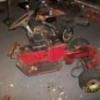Sign in to follow this
Followers
0

Rust Removal using Electrolysis
By
dobeleo, in Restorations, Modifications, & Customizations

By
dobeleo, in Restorations, Modifications, & Customizations